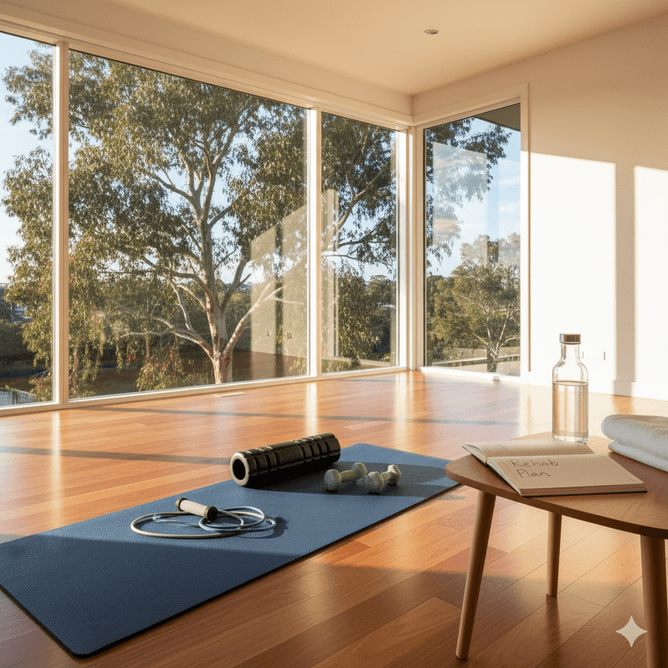When injuries happen, they can really disrupt our usual exercise routines. For many, working out is more than just physical activity; it’s a source of mental clarity, confidence, and routine. Being forced to take a break can feel frustrating and even lead to feelings of loss.
However, recovery doesn’t have to mean complete rest. With the right guidance, this period can become an opportunity to adapt, rebuild, and explore new ways of staying active. By listening to your body and focusing on what you can do rather than what you can’t, you can continue moving forward on your wellness journey.
Adjusting Exercise While Healing
Adjusting your exercise routine during recovery doesn’t mean you have to stop moving altogether. For example, if you have a knee injury, low-impact activities like swimming or cycling may be more comfortable than running. These gentle movements keep the body active while supporting joint healing.
If upper-body recovery is the focus, resistance bands or controlled mobility exercises can help maintain strength without adding unnecessary strain. The goal is to be creative, finding safe and sustainable ways to keep the body engaged while supporting recovery.
It’s important to consult an allied health professional, such as a physiotherapist or exercise physiologist, who can tailor modifications based on your specific injury and stage of healing.
Supporting Mental Health During Recovery
Injury recovery isn’t only physical; it also affects emotional well-being. Feeling discouraged or disconnected from your usual exercise routine is normal, but finding alternative ways to move can lift your mood and promote a sense of progress.
Trying new activities like stretching, Pilates, meditation, or gentle mobility work can keep you connected to movement. Joining a class or online community focused on rehabilitation can also provide motivation and support. Connecting with others who understand your journey helps build confidence and reminds you that recovery is not a setback but a temporary phase of growth.
Reintroducing Activities Gradually
As recovery progresses, reintroducing previous activities can be exciting, but it’s important to return slowly and mindfully. Start with shorter sessions and lower intensity to help your body adjust safely.
Keeping a progress journal can help track how you feel after each session, identify improvements, and note any discomfort. This practice brings awareness to your healing journey and helps celebrate every small win along the way.
Finding Strength Through Adaptation
Adapting exercise routines for recovery teaches valuable lessons about patience, resilience, and body awareness. It encourages us to slow down, listen, and rebuild strength with intention.
Every step forward, no matter how small, is progress. With creativity, professional support, and gradual reintroduction of activity, it’s possible to find joy in movement again.
At Holistic Strength, our allied health professionals work with clients to create safe and individualised exercise plans that support recovery, restore confidence, and promote long-term wellbeing. With the right approach, you can come back from injury stronger, wiser, and more connected to your body.
